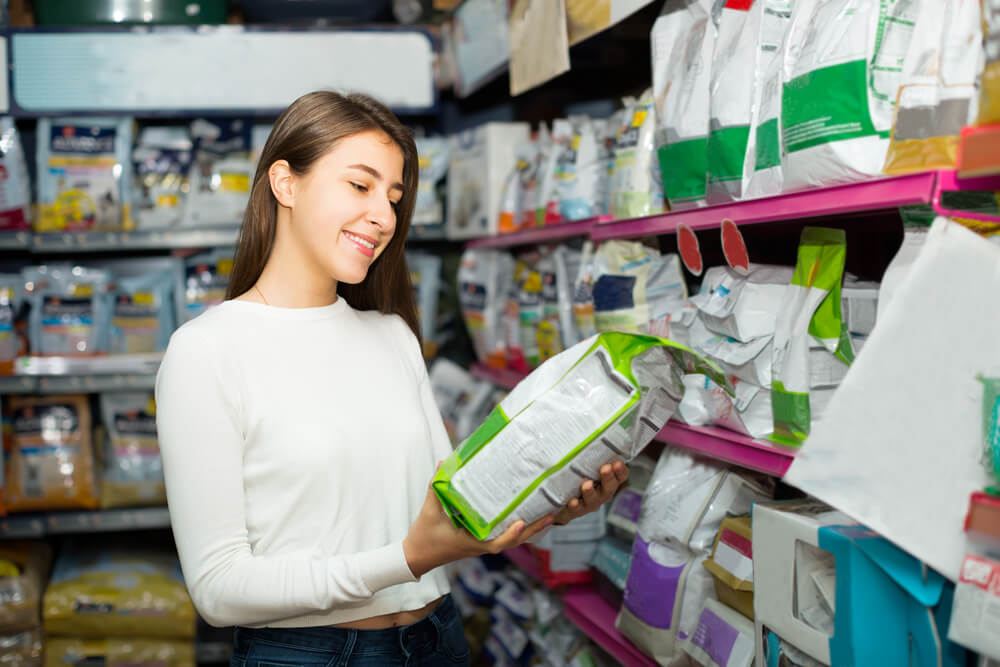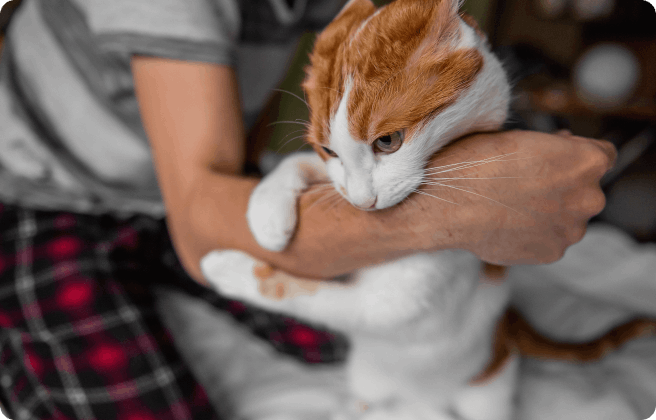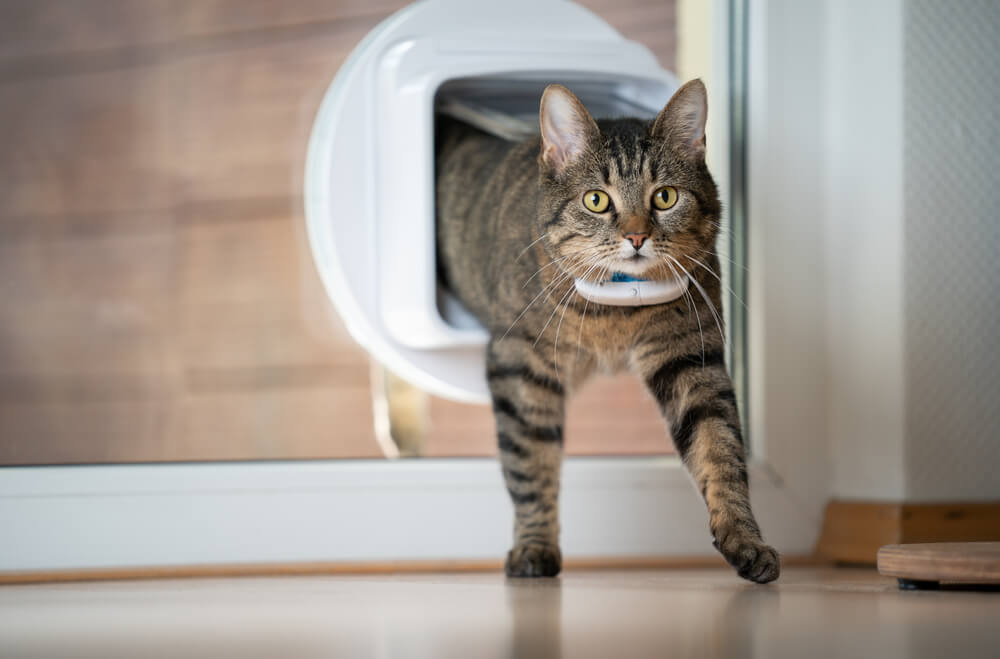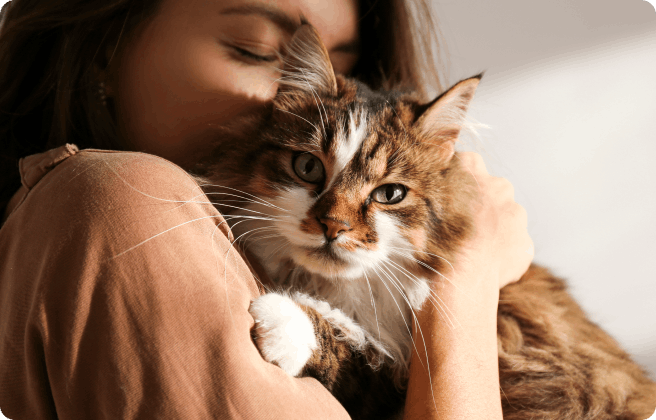
Choosing the right cat food is one of the most important aspects of being a pet parent. With hundreds of options available on the market, reading cat food labels can be confusing and overwhelming. But, it doesn’t have to be.
Looking beyond the marketing of cat food labels and understanding how to read the ingredient list, nutritional content, and various other statements can help you make informed decisions about your cat’s diet.
What do cat food labels mean?
Understanding the information on the cat food label is the first step. Before you look at the list of ingredients, check the name on the label to see who makes the food and if it’s a brand you can trust.
The front cover
The overview of the packaging will generally include the brand name and the prime ingredients used. For example, if you see “Grilled Chicken” or “Tasty Beef” on the front of cat food, this meat must make up 95% of the food’s ingredients, according to the AAFCO.
Nutritional Adequacy Statement
A “complete and balanced” cat food must meet or exceed the standards of an established nutrient profile. This statement will tell you if the food is suitable for a certain life stage, such as a kitten or senior cat.
Ingredient List
The ingredient list is the heart of a cat food label. Ingredients are listed in descending order by weight, with the primary ingredient appearing first. Look for high-quality protein sources such as deboned chicken, turkey, or fish as the main ingredient. Avoid products with ambiguous or generic ingredients like “meat by-products” or “animal digest.”
Nutritional Analysis
What’s the difference between nutrients and ingredients? Ingredients will name the food such as chicken, fish, or corn. These ingredients provide the essential nutrients that cats require and they are also listed.
Cat food labels provide a breakdown of the nutritional content, including protein, fat, carbohydrates, vitamins, and minerals.
Opt for a balanced diet that meets the nutritional requirements outlined by organizations like the Association of American Feed Control Officials (AAFCO). Cat food will usually contain protein, fat, vitamins & minerals, and carbohydrates.
However, it’s good to ensure that protein content is adequate to support your cat’s muscle development and overall health.
Guaranteed Analysis
The guaranteed analysis section outlines the minimum and maximum levels of key nutrients in the cat food. Pay attention to protein and fat content, as well as the levels of essential vitamins and minerals. This information helps you assess the nutritional adequacy of the food for your cat’s specific life stage and dietary needs.
Feeding Directions
The feeding directions are guidelines to help you determine how much to feed your cat. You may need to adjust this according to your cat’s needs but generally, it’s a good idea to go by these directions.
Calorie Statement
If you want to monitor your cat’s calorie content, you will see calories listed on a kilocalorie per kilogram basis and as a common unit of measure, like kilocalories per cup. This will help you when comparing different brands of cat food or measuring your cat’s calories if monitoring their weight. [1. https://www.purina.com/articles/cat/health/nutrition/how-to-read-cat-food-label]
Who regulates cat food labeling?
Pet food is highly regulated in the United States and must meet both federal and state regulations.
The U.S. Food and Drug Administration (FDA) regulates both finished pet food products and their ingredients. The majority of states also require pet products to be registered, and for their labels to adhere to strict requirements regarding product names and ingredients.
An ingredient cannot be used in pet food until it has been recognized by either the FDA or by the Association of American Feed Officials (AAFCO), the organization of state regulatory officials that develops a model bill and pet food regulations that states can adopt into their respective state laws.
The current FDA regulations require proper identification of the product, net quantity statement, name, and place of business of the manufacturer or distributor, and proper listing of all the ingredients in the product from most to least, based on weight.[2. https://www.fda.gov/animal-veterinary/animal-food-feeds/pet-food#:~:text=Labeling,to%20least%2C%20based%20on%20weight.]
Choosing the Best Cat Food
Consider Your Cat’s Age and Health Needs
Cats have varying nutritional requirements based on factors such as age, activity level, and health status. Kittens require higher protein and calorie levels to support their growth and development, while senior cats may benefit from specialized diets tailored to address age-related issues. Consult with your veterinarian to determine the most suitable diet for your cat’s life stage and health condition.
Evaluate the Quality of Ingredients
Focus on quality rather than quantity when assessing cat food ingredients. Choose products made with real meat, poultry, or fish as the primary protein source, preferably without artificial additives or fillers. Avoid cat foods containing excessive carbohydrates, grains, or preservatives, as these ingredients offer limited nutritional value and may contribute to health problems over time.
Read Reviews and Seek Recommendations
Before purchasing cat food, research customer reviews and seek recommendations from fellow pet owners, veterinarians, or reputable online sources. Pay attention to feedback regarding ingredient quality, palatability, and the overall impact on cats’ health and well-being. While individual preferences may vary, consensus among reviewers can provide valuable insights into the efficacy of different cat food brands.
Monitor Your Cat’s Response
Once you’ve selected a cat food, observe how your cat responds to the new diet. Look for signs of improved energy levels, coat condition, digestion, and overall vitality. Keep an eye out for any adverse reactions or digestive upset, as these may indicate a mismatch between the food and your cat’s individual dietary needs.
Reading cat food labels is an essential skill for pet parents to learn. Understanding how to read the ingredients and various statements helps you to choose the best food for your cat and so provides them with a nutritious diet.
We uphold the highest editorial standards when creating the authoritative content pet parents rely on and trust.
Every piece of clinical content on the Cat Food Advisor is reviewed by our certified Veterinary Advisory Board, which consists of licensed veterinarians and medically certified specialists.
Our reviews are completely independent; we are not paid by any pet food company to promote their products favorably. We do not accept money, gifts, samples or other incentives in exchange for special consideration. For more information see our Disclaimer & Disclosure page.









